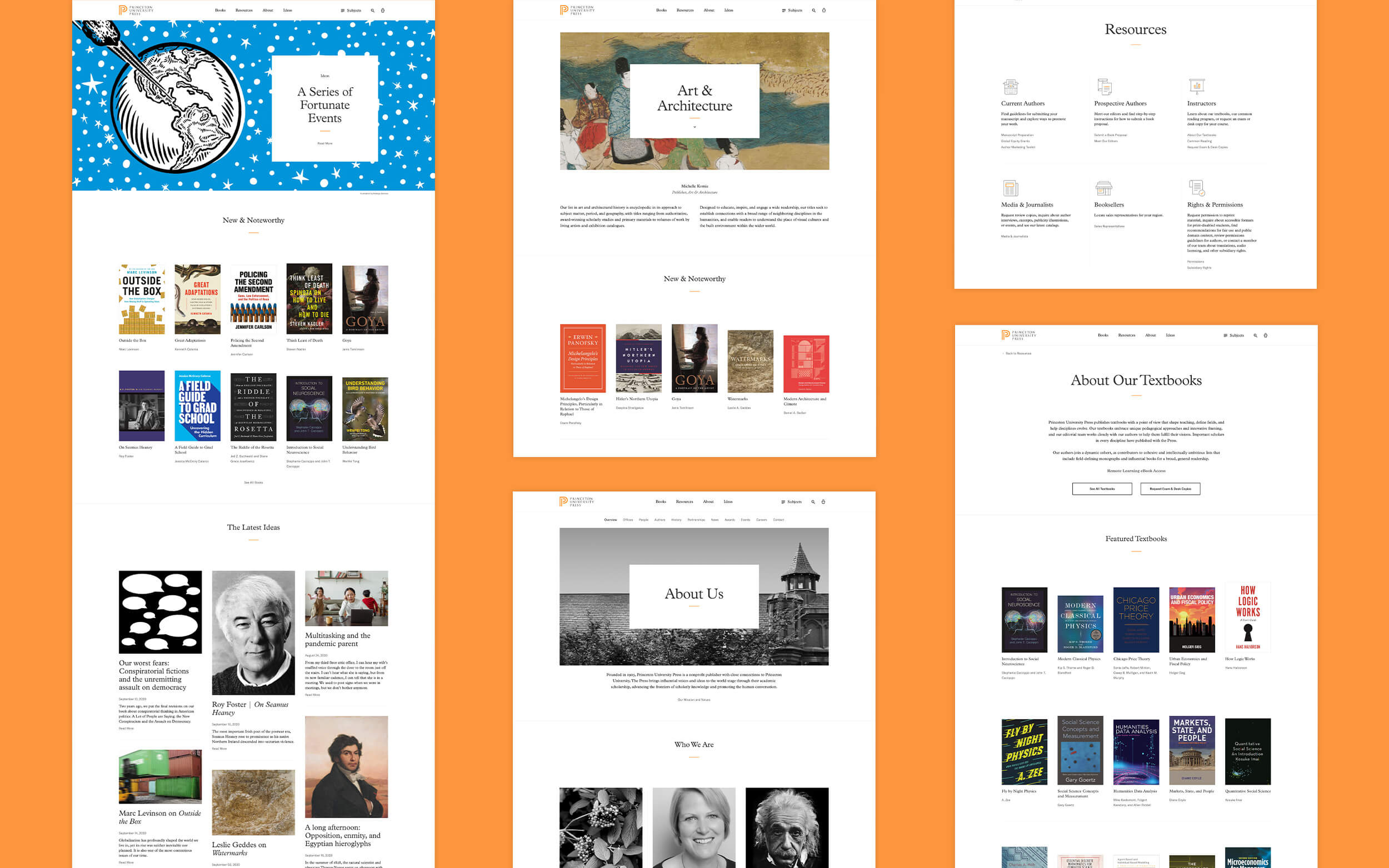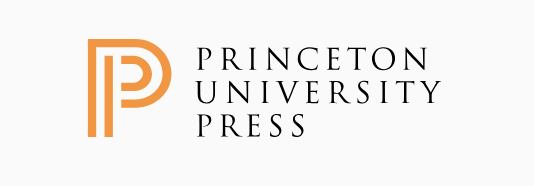Princeton University Press
Princeton University Press is an independent publisher with close formal and informal connections to Princeton University. It was founded in 1905 and has brought over 10,000 scholarly books to print, including the works of Albert Einstein. Six of their books have received Pulitzer Prizes. The Press’s mission is to disseminate scholarship through print and digital media, within both academia and society at large.
The website was first created in the 1990s and was retrofitted to add functionality over the years, resulting in a number of disparate moving parts. The website grew to include over 100,000 static and generated HTML pages, containing various pieces of information and images, mini sites, a WordPress blog, a newsletter and some basic commerce functionality for North America and Europe/Asia/Africa.

Goals
Migrating the site’s legacy data and creating an improved, responsive user experience were key to the project’s success. Working with the press’s web team, including their database architect and the director of web development, Evolving Web’s technical team performed a preliminary website audit and created a prioritized requirements and functionality list to define the following goals:
- Migrate a large amount of legacy content into a new Drupal installation
- Eliminate the use of different platforms and online methods to handle various legacy functionalities
- Improve the user experience
- Provide a format for displaying pages and online purchasing that is familiar and intuitive for website visitors
- Improve accessibility
- Allow for online purchasing from their two separate global markets
- Provide robust search capabilities, allowing visitors to effectively find publications
- Create a solution that allows staff to effectively use the new platform
- Work collaboratively to reduce client-initiated scope creep

Challenges
The press’s previous website had been created in a piecemeal manner by a former employee, where custom scripts pulled data from the press’s custom database, to build static HTML pages. Evolving Web needed to be able to access the database to create the migrations, and then pull that content into Drupal. The complexity of the migration was the largest challenge, with the huge volume of existing elements adding to the complexity.
Specifically, the technical challenges included the following:
- Performing a complex migration of 8,000+ books and 4,000+ jpgs
- Identifying and removing out-of-print books and their associated elements
- Recreating a large number of static HTML pages (100,000 static and generated pages)
- Developing a consistent way to display 10,000 different book templates
- Building a custom module to assist with migration challenges
- Addressing legacy complexity
- Creating fields to import the large number (36) of unique imported book fields
- Managing cron migrations on Pantheon
- Dealing with the complexity of the legacy code base
- Providing an editor workflow solution

Solution
- Analysis of the legacy database, scripts and website
- Complete content audit and analysis, defining required fields and obsolete material
- Move the records (information on the static HTML pages) to Drupal, to organize and streamline content
- Update layout and functionality to a responsive design with a clean layout, simplified menu, streamlined search and improved shopping experience
- Synchronize data from central system and migrate it into Drupal
- Deploy to a managed hosting environment
- Train staff as editors on the new Drupal solution so they are able to revise existing content and produce new publication listings, allowing for continual site improvement and expansion
- Provide tools and guidelines to assist staff with developing a successful content strategy
Why Drupal?
- Drupal is an open-source platform that has been widely adopted by the Princeton University community
- Drupal is a single platform that can handle different functionalities, integrating multiple technologies. One platform can do it all. And using Drupal means new functionality will be available or can be created when needed
- The Drupal CMS enables a robust content migration and a synchronization framework
- With just a few hours of training, multiple site editors and contributors can use Drupal’s workflow system to systematically and easily add approved content to the website
- Drupal is a stable, secure and maintainable platform

Results
The homepage refresh used the existing branding to produce a modern look-and-feel for the website. It utilizes a standard responsive template to adapt the site to desktop computers and mobile devices. The new user interface includes a minimal drop-down main menu, a clean and accessible footer, and a search box that collapses.
The complex migration of ~8,000 books and ~4,000 jpgs was successful. Migration continues with a process that is optimized to prevent downtime / inconsistency on the live site. Migrations can be run manually or automatically at night, and out-of-print books are systematically removed from the database.
The Bootstrap-based design has improved SEO while conforming to accessibility standards. And it is easy for content editors to update web content using WYSIWYG while images are auto-resized, providing visual consistency for the brand.
The previous website regenerated 50,000 pages for even a small tweak to a template or change in functionality. Under the new system, an automatic nightly process synchronizes the content to the Drupal database, with all other changes to pages propagating instantly. The result is significant speed improvements for iterations on website functionality, making it easier to apply bug fixes.


